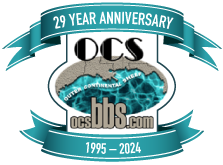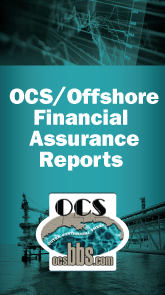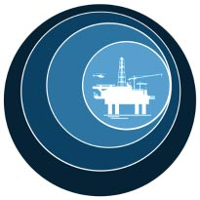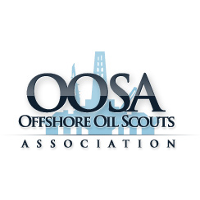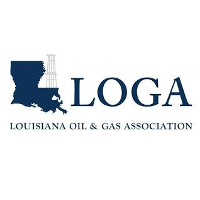Company Platform Data for the Gulf of Mexico
| Field (Abbreviated) Name | Description |
|---|---|
| Area/Block | The Area Code and designated OCS Block Number where the platform is located. |
| Lease No. | The number used to identify the minerals lease where a platform is located. |
| Install Date | The date that an platform, pipeline, or piece of safety equipment was installed on the Outer Continental Shelf (OCS). |
| Last Revision | Date a row in the database was last updated |
| Structure Name | The name of the structure assigned by the owner. |
| Structure Number | A unique number assigned to a specific structure within a complex. |
| Company | Indicates the MMS designated operator of the platform. |
| Field | Name of the field in which the well is located. |
| Distance to Shore | The approximate distance to the nearest coastline. The nearest coastline may be an island or a point on the U.S. shoreline. |
| Water Depth | The depth of the water at a well/platform location from the water level to the mud line. |
| Major Structure | An indicator of whether a platform contains at least 6 completions or contains more than 2 pieces of production equipment. (Y/N) |
| Structure Type | An indicator of the type of structure.
CAIS- Caisson. |
| Surface Location | First character is an indicator the facility location was measured from either the east (E) or west (W), north (N), or south (S) block boundary line. The next number is the distance that represents the length of a measurement from an identifiable line. |
| Underwater Completions | The number of underwater completions that have their production processed at this location. |
| Satellite Completions | The number of satellite completions that have their production processed at this location. |
| Decks | The number of decks a location contains. |
| Rigs | The number of rigs at a location. |
| Cranes | The number of cranes at a location. |
| Slots | The number of drilling slots that a location was designed to handle. |
| Slant Slots | The number of slant drilling slots the facility was designed to handle. |
| Drilled Slots | The total number of drilling slots that have been used at the location. |
| Attended 8 Hrs. | An indicator of whether a location is manned 8 hours per day. |
| Manned 24 Hrs. | An indicator of whether a location has personnel on board 24 hours per day. |
| Drilling | An indicator of whether a platform is drilling. |
| Workover | An indicator of whether the platform operations are in the workover status. |
| Production | An indicator of whether the platform is producing crude oil and/or gas well gas. |
| Gas | An indicator of whether a location is producing gas. |
| Oil | An indicator of whether a location is producing crude oil. |
| Condn | An indicator of whether a location is producing condensate. |
| Water | An indicator of whether a location is producing water. |
| Sulfur | An indicator of whether a location is producing sulfur. |
| Gas Flare | An indicator of whether or not there is approved burning or disposition of produced gas through a pipe or underwater flare. |
| Injection | An indicator of whether a location is injecting gas or water. |
| Commingling | An indicator of whether a location is commingling production. |
| Allocation | An indicator of whether a location has an allocation meter. |
| Gas Sale | An indicator of whether a location has a gas sale meter. |
| Liquid Automatic Custody Transfer | An indicator of whether a location has a Liquid Automatic Custody Transfer (LACT) meter. |
| Tank Gauge | An indicator of whether a location measures production by tank gauge. |
| Meter Prover | An indicator of whether or not a **meter prover** is located in the **complex**. |
| Fired Vessel | An indicator of whether a location has fired vessels. |
| Heliport | An indicator of whether a heliport is present. |
| Product Storage Tanks | An indicator of whether a location has a storage tank. |
| Production Equipment | An indicator of whether the location has production equipment installed. |
| Compressor | An indicator of whether a location has compressors. |
| Comments | Textual entry to define remark made by a technician. |
| Type (Quarters) | An indicator of the type of quarters at a location. |
| Bed Count | The number of beds in the living quarters of a location. |
| Source (Power) | An indicator of whether a location power source is electrical or diesel. |
| Generator | An indicator of whether a location has power generation equipment. |
WP or Well Protectors have been defined as:
Similar to conventional platforms, well protectors consist of small piled jackets (with legs generally less than 36 in), which may or may not support decking. Used primarily to safeguard producing wells and their associated production trees from boat damage and debris, the design of most well protectors tends to avoid the large tubulars and deck reinforcements often necessary for supporting drilling and production equipment.
FIXED or jacketed structures have been defined as:
Consisting of one or more above waterline decks tied atop a submerged tubular frame, jacketed platforms are the most common non-well structures found in the GOM. There are currently over 2,375 jacketed platforms in place on the OCS, making up about 60 percent of all bottom-founded, surface structures. Brought on location in sections, the platforms are secured to the seafloor by piles driven through the jackets legs, which may number anywhere from 3 to 12 or more with leg and pile diameters spanning from around 18 in (46 cm) to over 96 (244 cm) in (NRC, 1996). Commonly called conventional piles, these pilings are driven tens to hundreds of feet into the seabed and are often grouted or cemented to the surrounding jacket leg for added stability. Once leveled, the deck assemblies, collectively called topsides, are welded to the tops of the piles protruding from the jacket legs with additional bracing where necessary. Most jacketed platforms are typically placed above previously drilled exploration wells to support their production, additional drilling operations, and equipment housing. Though not as common, some platforms are not associated with any well operations and are instead used to support generator, berthing, and storage facilities (DEMEX, 2003).
Conventionally piled structures make up the majority of jacketed platforms on the OCS (Figure 1-4), but in situations where additional load support and/or storm protection is needed, support bracing and sleeves are added to the lower jacket to accept skirt piles. Similar to conventional pilings, the skirt piles are driven deep into the seabed to pin the bracing and jacket; however, the subsea termination of the sleeves requires the use of submersible piling hammers and in many cases ROV's for guidance and observation (CSA, 2004). Skirt pilings may also be grouted to their surrounding sleeves depending upon environmental conditions and platform requirements. In many circumstances, platforms use both conventional piles through the jacket legs in addition to braced skirt pilings to compensate for extreme load weights and stresses.
